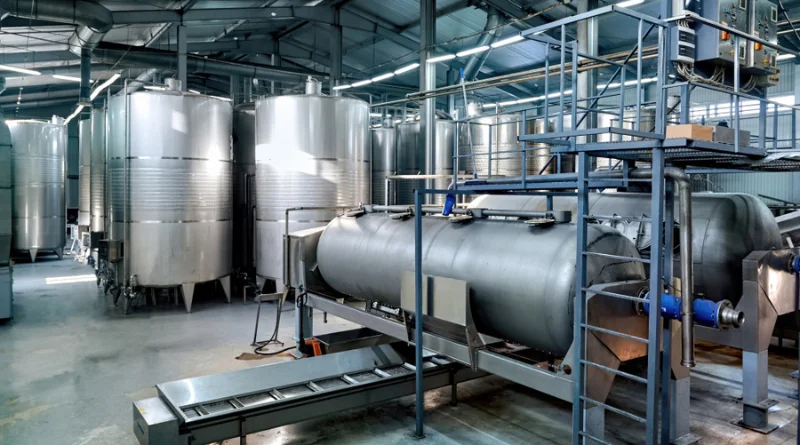Reliability, adaptability, and efficiency are critical in the field of modern engineering. The pharmaceutical and wastewater treatment industries, among others, are always looking for new and creative ways to improve efficiency and streamline operations. A solution that is becoming more and more popular is the double diaphragm pump. Given the challenges posed by handling corrosive, abrasive, and viscous fluids, the double diaphragm pump presents itself as a sturdy and adaptable substitute. In this article, we examine the growing significance of double diaphragm pumps in contemporary engineering, including their features, uses, advantages, and prospects for the future.
Functionality of Double Diaphragm Pumps
The working mechanism of double diaphragm pumps, sometimes referred to as AODD (Air-Operated Double Diaphragm) pumps, is straightforward but efficient. They are composed of two diaphragms that are stretched back and forth by compressed air or fluid. These diaphragms are usually comprised of thermoplastics or elastomers. The reciprocating movement of the pump provides suction on one side while expelling the fluid on the other, facilitating the transfer of diverse liquids such as viscous fluids, abrasive slurries, and caustic chemicals.
The capacity of double diaphragm pumps to manage a broad range of fluid consistencies and viscosities without sacrificing performance accounts for its adaptability. Furthermore, because of their self-priming ability, they can be used in processes like chemical processing, paint manufacture, and others where a constant fluid flow is necessary.
Applications of Double Diaphragm Pumps
The adaptability of double diaphragm pumps makes them indispensable across numerous industries. Some of the key applications include:
Chemical Processing: Double diaphragm pumps excel in handling aggressive chemicals, acids, and solvents commonly found in the chemical processing industry. Their corrosion-resistant construction ensures safe and efficient fluid transfer without the risk of contamination or leakage.
Wastewater Treatment: In wastewater treatment plants, where the handling of abrasive sludges and viscous liquids is prevalent, double diaphragm pumps offer an ideal solution. Their rugged design and ability to handle solids make them well-suited for dewatering, sludge transfer, and chemical dosing applications.
Paint and Coatings: The paint and coatings industry relies on double diaphragm pumps for the transfer and circulation of various formulations, including high-viscosity paints, adhesives, and coatings. The gentle pumping action minimizes shear forces, ensuring the integrity of sensitive materials.
Mining and Construction: Double diaphragm pumps play a vital role in mining and construction operations, where the handling of abrasive slurries, grouts, and concrete additives is essential. Their robust construction and ability to withstand harsh environments make them indispensable for dewatering, slurry transfer, and mine dewatering applications.
Food and Beverage: In the food and beverage industry, where hygiene and product integrity are paramount, double diaphragm pumps offer a sanitary solution for the transfer of liquids such as dairy products, syrups, and sauces. Their hygienic design and FDA-compliant materials ensure compliance with stringent regulatory standards.
Benefits of Double Diaphragm Pumps
The growing adoption of double diaphragm pumps can be attributed to their numerous benefits, including:
Versatility: Double diaphragm pumps can handle a wide range of fluids, from thin solvents to highly viscous slurries, making them suitable for diverse applications across various industries.
Self-Priming: The self-priming capability of double diaphragm pumps eliminates the need for external priming systems, simplifying installation and operation.
Dry-Running: Unlike centrifugal pumps, double diaphragm pumps can run dry without causing damage to the pump, reducing the risk of downtime and maintenance costs.
Containment: The double diaphragm design ensures containment of the pumped fluid, preventing leaks and spills that could pose safety hazards or environmental risks.
Low Maintenance: Double diaphragm pumps feature a simple, modular design with few moving parts, resulting in minimal maintenance requirements and reduced downtime.
Energy Efficiency: With no electric motor or seals to maintain, double diaphragm pumps offer energy-efficient operation, particularly in air-operated configurations where compressed air is readily available.
Future Prospects
As industries continue to prioritize efficiency, sustainability, and safety, the demand for double diaphragm pumps is expected to grow. Advancements in materials technology, such as the development of high-performance elastomers and thermoplastics, will further expand the range of fluids that can be handled by double diaphragm pumps. Additionally, the integration of smart monitoring and control systems will enhance pump performance, reliability, and predictive maintenance capabilities, leading to improved operational efficiency and cost savings.
Conclusion
In conclusion, the rising importance of double diaphragm pumps in modern engineering is evident across a wide range of industries, where their versatility, reliability, and efficiency are driving significant advancements in fluid handling technology. From chemical processing to food and beverage production, double diaphragm pumps offer a robust solution for transferring corrosive, abrasive, and viscous fluids with minimal maintenance requirements and maximum operational flexibility. As industries continue to evolve, the role of double diaphragm pumps is poised to expand, shaping the future of fluid handling in the engineering landscape.

